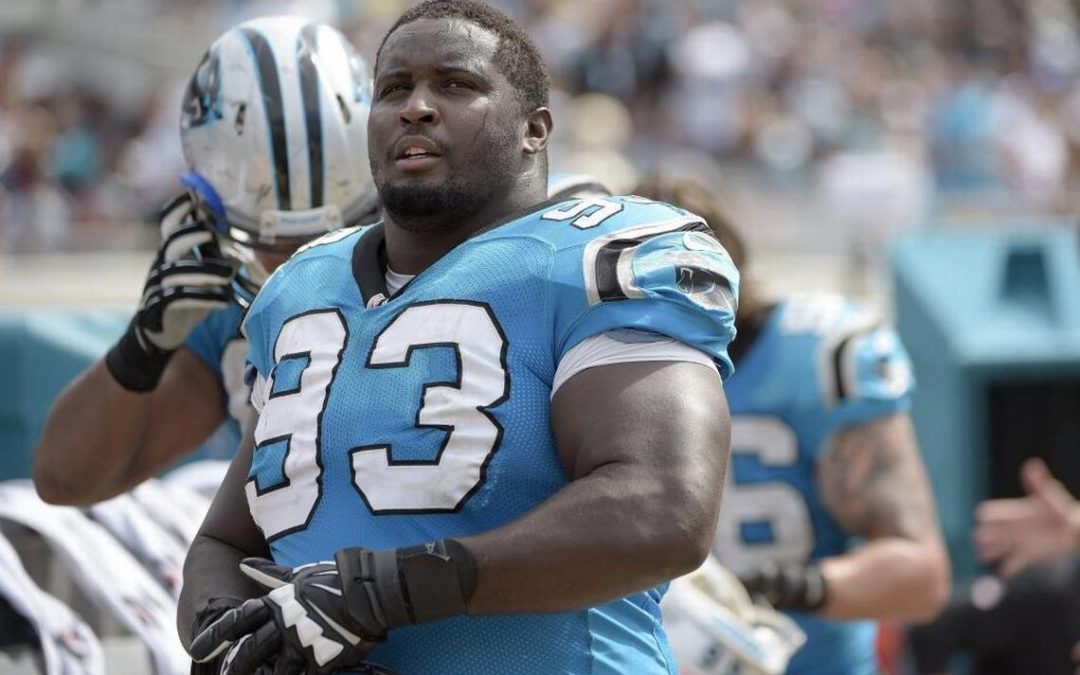Last Monday’s practice was highlighted by several developments: Cam throwing during team drills, Curtis Samuel’s return, and a total eclipse of the sun. What might well have slipped under the radar was Kyle Love’s return from an ankle injury that had sidelined him for most of training camp. While Love isn’t one of the star players on the Panthers’ roster, this article will explore why he is important to the defensive front and what his injury concerns might mean.
In order to understand Love’s value to the Panthers, it is important to examine exactly what Love’s role is. Ostensibly, he is a depth player, though what that denotes varies between positions and schemes. In the Panthers’ defensive scheme, the ‘depth’ defensive tackles are expected to see significant snaps as part of a rotation.
To expect depth players to fully replicate the production of the starters is unrealistic, but where the Panthers and many others have had success is in using rotation players situationally. While the use of players in this way could well be the subject of several articles, this article will focus on how Love has been used as a specialist run defender.
To this point, we will look at the areas in which a run defending tackle needs to succeed in order to be effective. Although it cannot hope to fully examine every facet of these areas, by comparing Love to former Panther Paul Soliai, it should be possible to see how Love is able to add value. While no longer on the roster, Soliai has been chosen as a mediocre run defender who happened to see extended snaps in the same role on the same defense as Love last season and, as such, is likely to make for the fairest comparison.
Anchor
Although more commonly associated with 3-4 defensive schemes, 4-3 schemes also rely on defensive linesmen being able to anchor against the run, thereby allowing the linebackers to make plays. On the following play, the Buccaneers look to use two blockers to move Love (#77) back to create space for the running back.
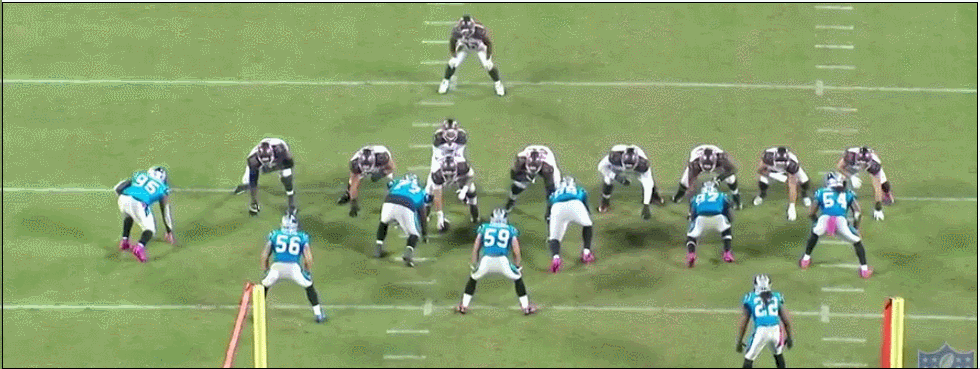
While strength is obviously important, what separates Love from some other defenders is his ability to play with consistently good leverage. By getting lower than his blocker, Love is able to hold his ground and allow his fellow defenders to make plays. By comparison, on the next play, Soliai (#90) doesn’t get low enough and is easily driven back by #62.
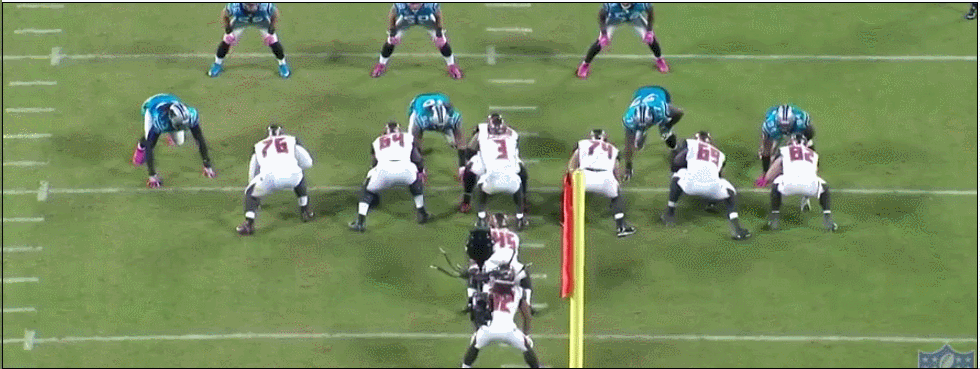
By consistently forcing double teams, Love prevents blockers being able to get to the second level as quickly as might otherwise happen. This in turn opens up space for second-level defenders to make plays, as with Shaq Thompson below.
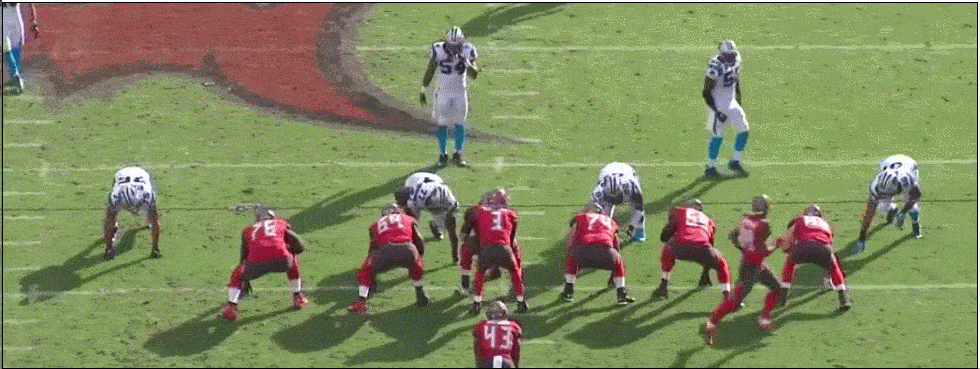
Here, the center is forced to aid the guard in blocking Love and is unable to get to Thompson in time to prevent the tackle. However, such plays are only possible if the offense feels it necessary to use two blockers on Love.
Penetration
At a simplistic level, besides eating up space inside, a defensive linesman’s ability to disrupt the run game depends on his ability to penetrate and maintain gap discipline. The ability to penetrate is largely a result of strength, pad level and burst which, in combination, allow the defender to disrupt the play in the backfield, as below.
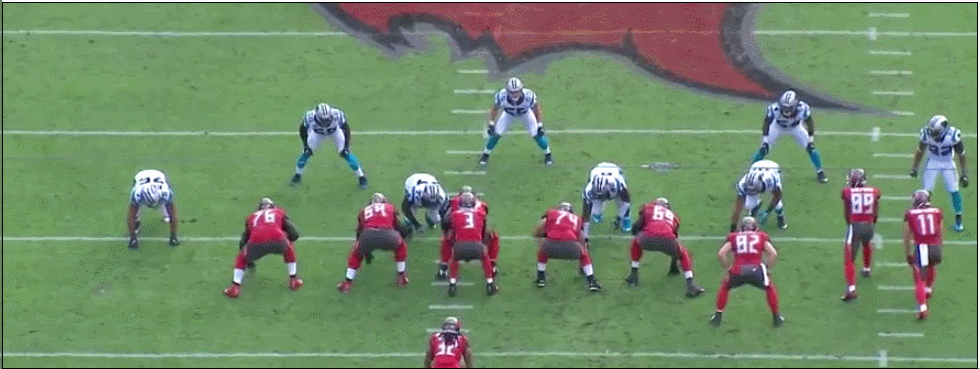
Here, Love gets under the pads of his blocker and drives him back, thereby forcing the running back outside into the pursuing defenders. While Soliai and many others are able to make similar plays on occasion (as in the first of the following plays), Love’s consistently better leverage limits the number of times he is jacked-up by solo blocks, as happened to Soliai on the second play below. Look for #90.
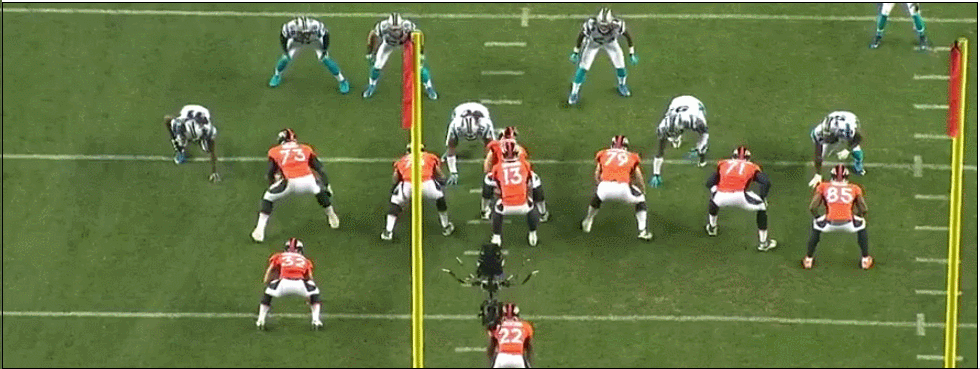
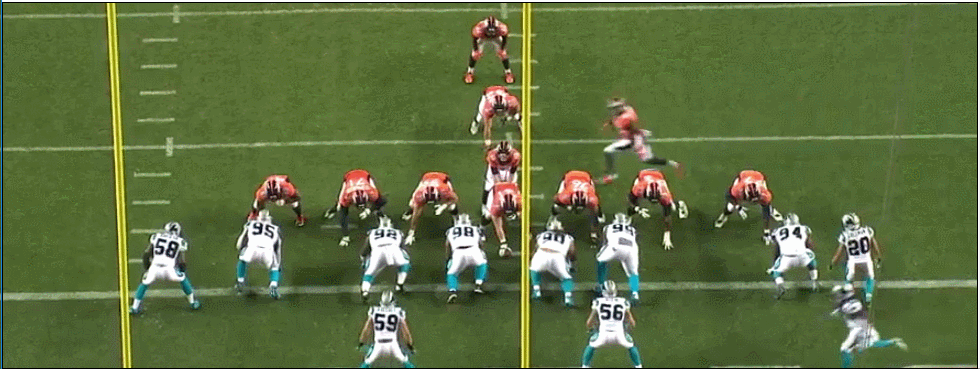
It’s by being able to be disruptive in this way that Love is able to force double-teams from blockers. This opens up space for others and, as with his anchoring ability, it is as much to do with his pad level as anything else.
Gap Discipline
Beyond being merely technically sound, run defense relies heavily on discipline and understanding. The idea of ‘hitting your gap’ is often talked about, but what does it actually look like on tape? On the following play, Love stays on the outside of the guard and forces the run back inside.
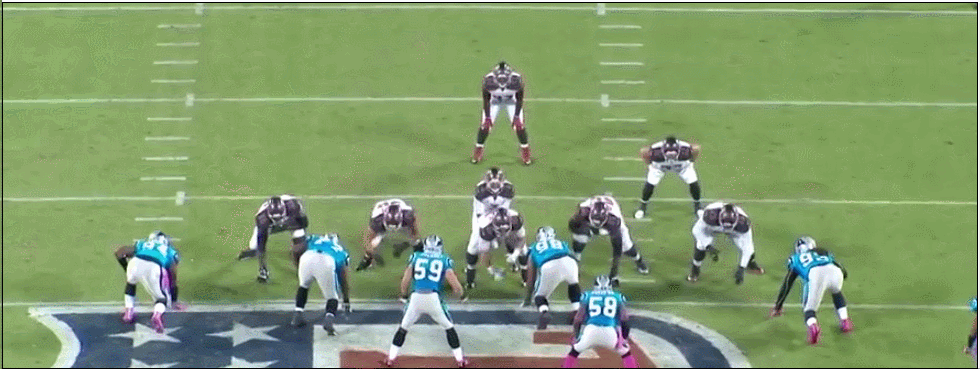
While Love doesn’t make the tackle on this play, and probably wouldn’t have stood out without being mentioned, a failure to maintain gap discipline would open up significant running room for savvy running backs. On the following plays, Soliai (#90) looks to blow up the play with penetration but, by failing to maintain outside leverage on the center, he allows the offensive line to seal off a lane for the running back.
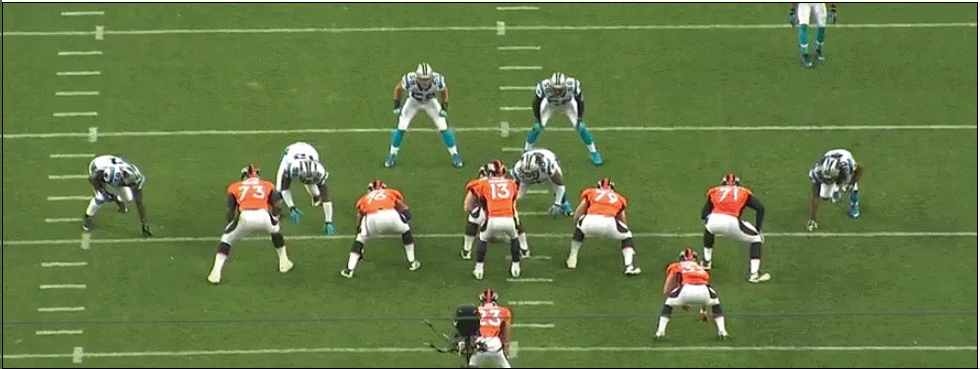
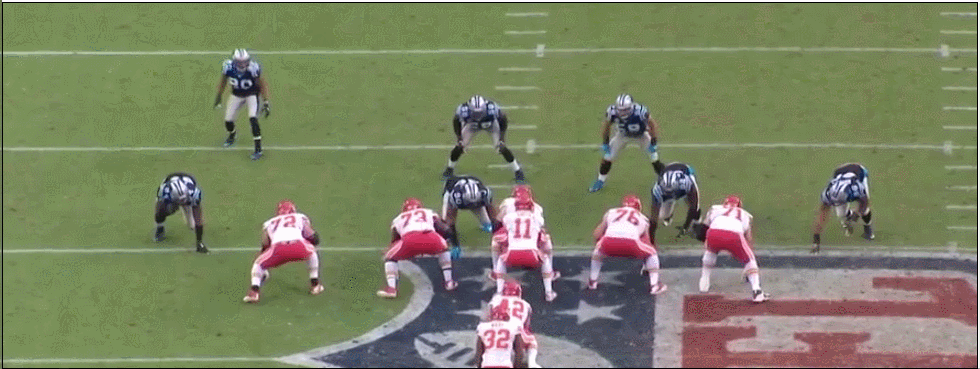
This is especially important on stretch runs, where the offence is looking for a breakdown in gap discipline to create a vertical running lane. Here, Soliai seems to miss the shift called by Thomas Davis and the defense double-fills one gap as a result, leaving a wide-open cut back lane as Soliai gets too far up the field.
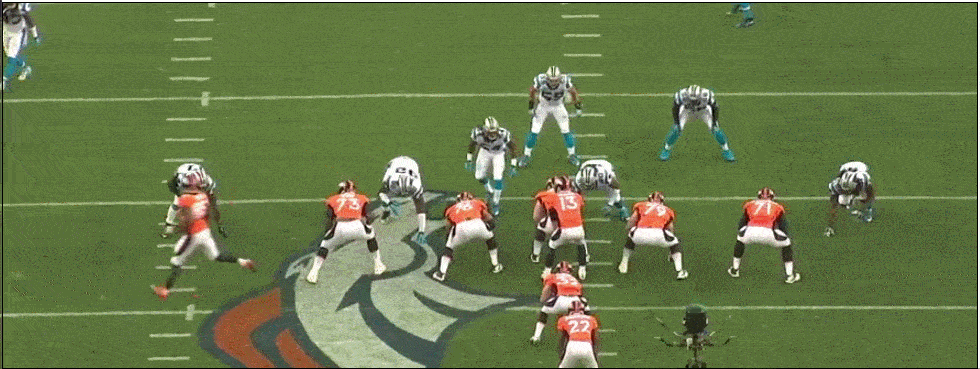
By contrast, Love is able to follow his gap across the field whilst also being able to be in a position to make the tackle. This is important as in the second play, although Soliai is in the right gap, he is unable to maintain leverage and balance.
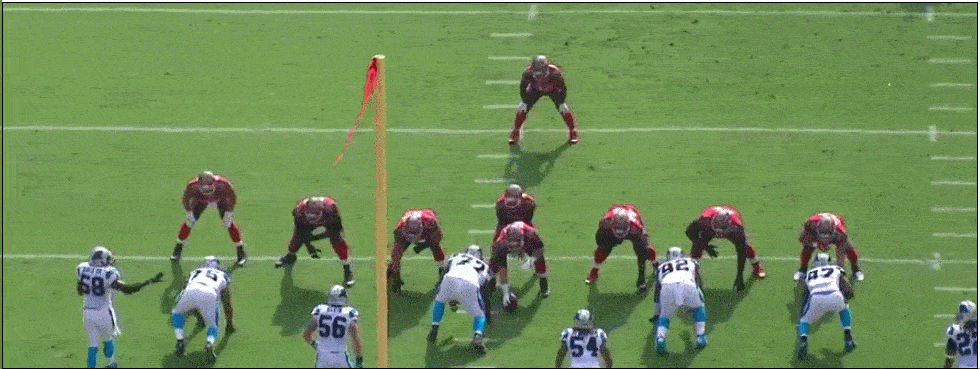
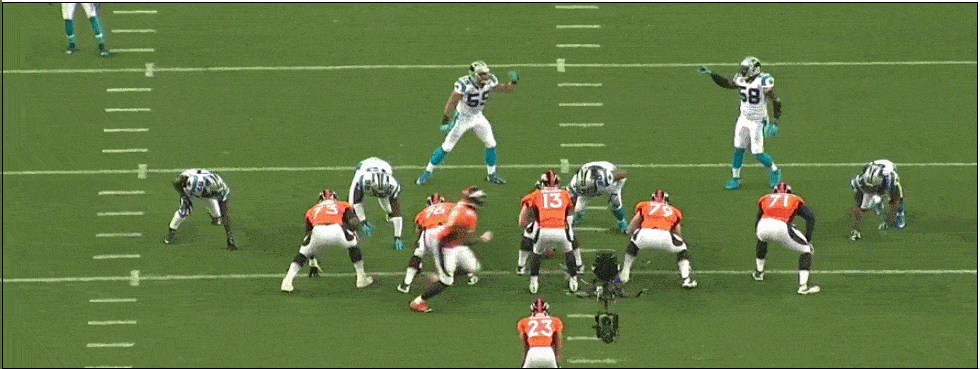
It should be fairly clear from what has been shown so far been shown why Kyle Love is still on the roster and Paul Soliai isn’t. However, what remains to be seen is how the Panthers are positioned to deal with Love’s absence to start the season, should he be unable to make a full return from injury.
The Crume of the Crop
Should Love not be healthy to start the year, the Panthers will need to look to replace him. While this might well be a player not currently on the roster, Eric Crume’s extended playing time throughout the preseason might indicate a desire to fully explore that option first.
There is certainly a lot to like about Crume on tape, and his ability to penetrate and generate splash plays is a significant part of that. This was especially evident against the Titans, where he was able to get inside the reach of his blocker and penetrate to tackle the ball-carrier for losses.
He also shows an ability to follow his gap and then shed the solo block to make the tackle, as below.
However, this can sometimes create issues when he focuses on trying to penetrate and makes mistakes as a result. On the first of the following plays, he lowers his shoulder in order to drive through the blocker, but the blocker is able to time his punch well and drive Crume wide to create a seam.
His issues with gap discipline go beyond his attempts to make plays, and apparent mental errors are the largest criticism of Crume’s play so far this preseason. On the first play, he shows a willingness to stay in his gap, getting outside his blocker and forcing the runner inside where a tackler is waiting.
However, on both of the next two plays, Crume doesn’t show such discipline and fails to fill his gap First, he fails to reach the frame of the center, allowing himself to be blocked by the guard instead. This allows the center to block the linebacker on the second level to generate the long run. Instead, he needs to be able to trap the center in order to allow the linebacker to make the tackle.
On the second play, he again fails to get outside his blocker(#62), which allows the offense to block him out of the play and create a seam. He needs to show the same quickness he uses to penetrate in order to get to his gap in order for the run to be snuffed.
Most of these errors are mental, and should be solved with time and snaps, but with the season approaching he may struggle to have progressed sufficiently in time. Whether he is able to show improvement in these areas should certainly be something to watch for during the Panthers’ final preseason game as, should Love not be healthy enough to play in San Francisco, Crume is by far the most ready to step up to replace him.

